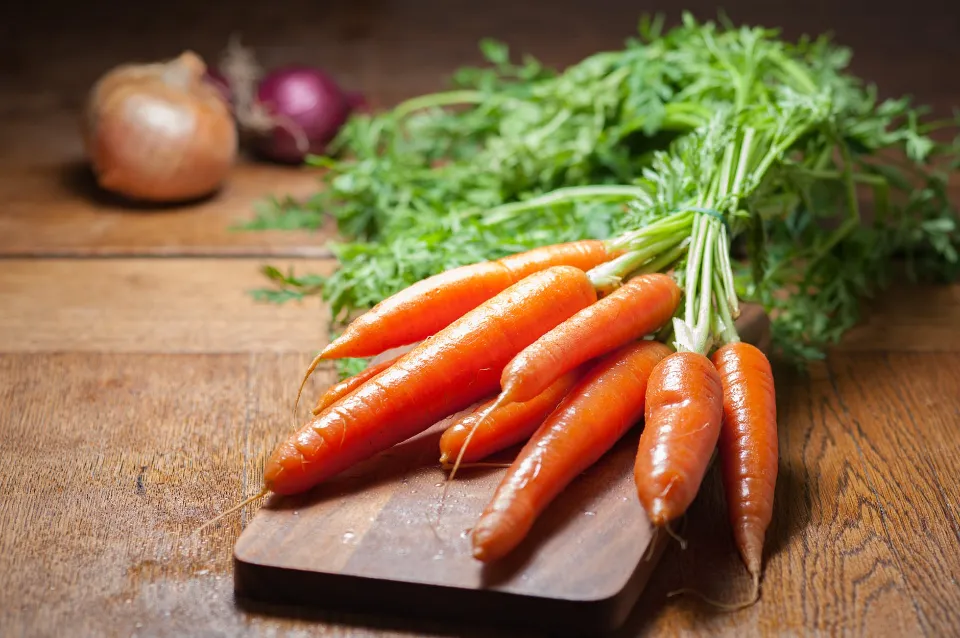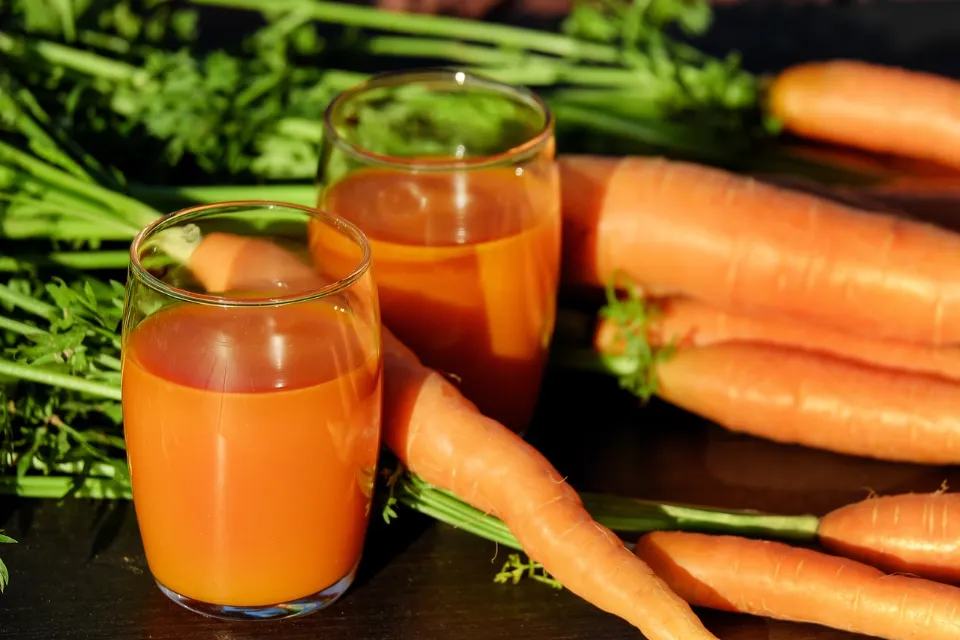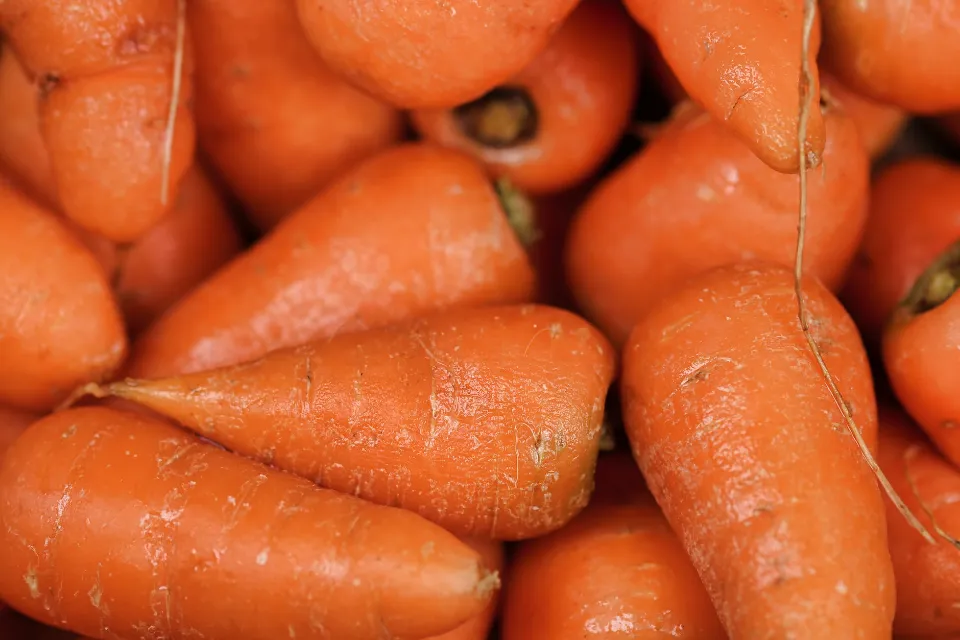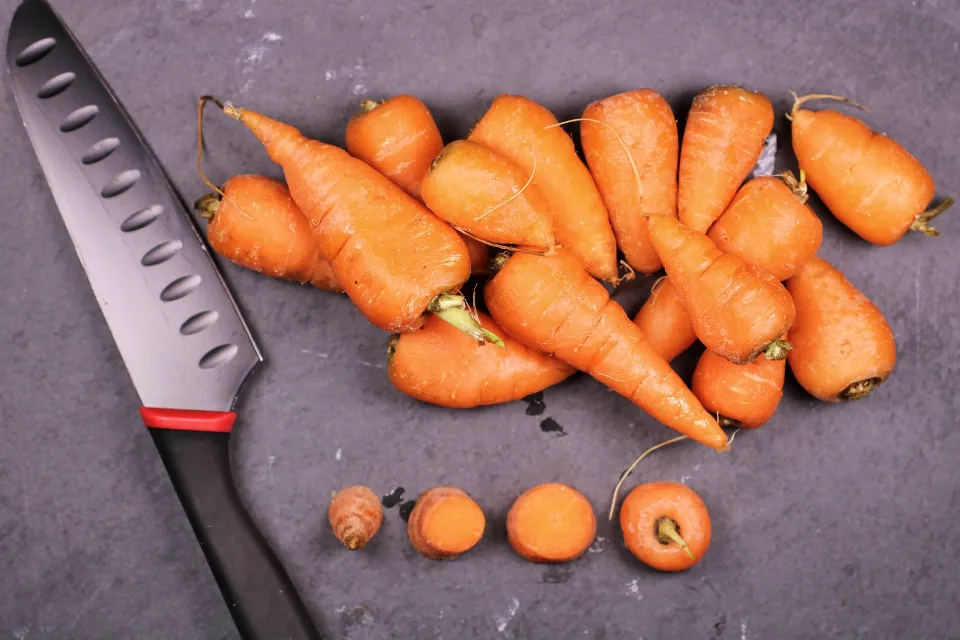When it comes to sodium, people always speak badly of it. It is commonly believed that the lower intake of sodium, the better, is that true? Of course not!
The truth is that we need to intake a little sodium in our diet. We need sodium in a small amount. So, does carrot have sodium? How much sodium a carrot has?
In this article, I’ll show you how much sodium is in one of our most familiar food—carrots. Let’s find out now!

Amount in Carrots
Depending on its size, a carrot will contain a specific amount of sodium. For instance, a small, raw carrot measuring 5 1/2 inches long and 1 3/4 ounces in weight contains almost 35 milligrams of sodium. 50 milligrams of sodium are contained in a larger, 7 to 8 1/2-inch, 2 1/2-ounce carrot. There are no more than 5 milligrams of sodium in each of the 3 inch, 1/4 ounce raw carrot sticks. Less than 45 milligrams of sodium are present in one-half cup of grated carrots, such as those that are piled high on a salad.
Sodium in Carrot Juice
If you’re using carrots to make carrot juice, there is one exception.
To make one cup of carrot juice, 3 to 6 carrots are required.
So, if you drink carrot juice, the most you should drink in a day is 8 to 16 cups.
Although you are very likely to never consume this much, it gives you a cap.
It’s also important to consider how many vitamins and minerals you’ll consume overall as a percentage of your recommended daily intake when planning your entire diet.

Why You Need Sodium
Mineral electrolytes include sodium. For the fluid in and around cells to remain in a constant state of balance, you need it. Your heart beats and your muscles can relax and contract as a result of this process, which keeps electricity flowing. Additionally, sodium aids in the assimilation of sugar, protein, and water. For these fundamental biological processes, sodium is necessary, but too much can be harmful. Your body will retain fluid if you consume more than your daily allowance, which raises your risk of high blood pressure, atherosclerosis, and heart disease.
How Much You Need
The Linus Pauling Institute states that the daily sodium limit is 1,500 milligrams. Less than 5% of your recommended daily intake is provided by a single large carrot. Salting cooked or fresh carrots should be done with caution. One-half teaspoon of salt contains about 1,200 milligrams of sodium.

Healthy Dipping
On their own, plain carrots can get a little monotonous. You’ll consume far more sodium from your healthy snack if you dip carrot sticks in regular Italian dressing. Regular Italian dressing contains almost 490 milligrams of sodium in two tablespoons. Blue cheese dressing has a similar amount, about 335 milligrams. Instead of dressing, spread hummus on fresh carrot sticks. There are fewer than 110 milligrams of sodium in two tablespoons of hummus. Peanut butter is another option. A 2-tablespoon serving of regular smooth peanut butter has 160 milligrams of sodium.

Conclusion
Although sodium frequently receives a bad rap, your diet actually needs a small amount of it. Carrots and other fresh produce come with a small amount of sodium by nature. Carrots are a low-sodium food, but if you eat them with a salty dip, your sodium intake will increase significantly. Take them therefore sparingly.
Related Reading
5 Best Low-Sodium Cheeses You Can’t Miss
Healthy Options at Pollo Tropical
Healthy Options to Have at Panera
FAQs
Are Carrots Naturally High in Sodium?
Fresh produce, including carrots, naturally contains a small amount of sodium. Even though carrots are a low-sodium food, if you pair them with a sodium-rich dip you’ll significantly boost the amount of sodium you consume.
Are Tomatoes High in Sodium?
For a food to be considered very low in sodium, it needs to contain less than 35 milligrams of sodium per serving. A large, raw tomato, which is equal to about 1 cup of chopped tomato, contains only 9 milligrams of sodium, so tomatoes qualify as a very low-sodium food.
How Much Sodium Does a Potato Have?
Potatoes are naturally fat-free, cholesterol-free, and sodium-free. In addition, potatoes are an excellent source of vitamin C, and a good source of potassium. Foods that are good sources of potassium and sodium-free, such as potatoes, may reduce the risk of high blood pressure and stroke.


